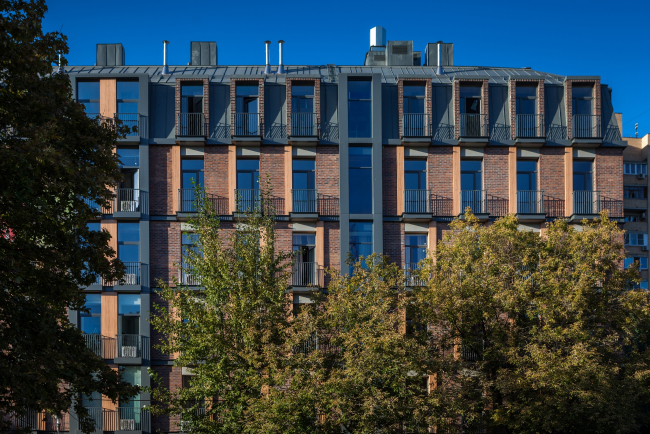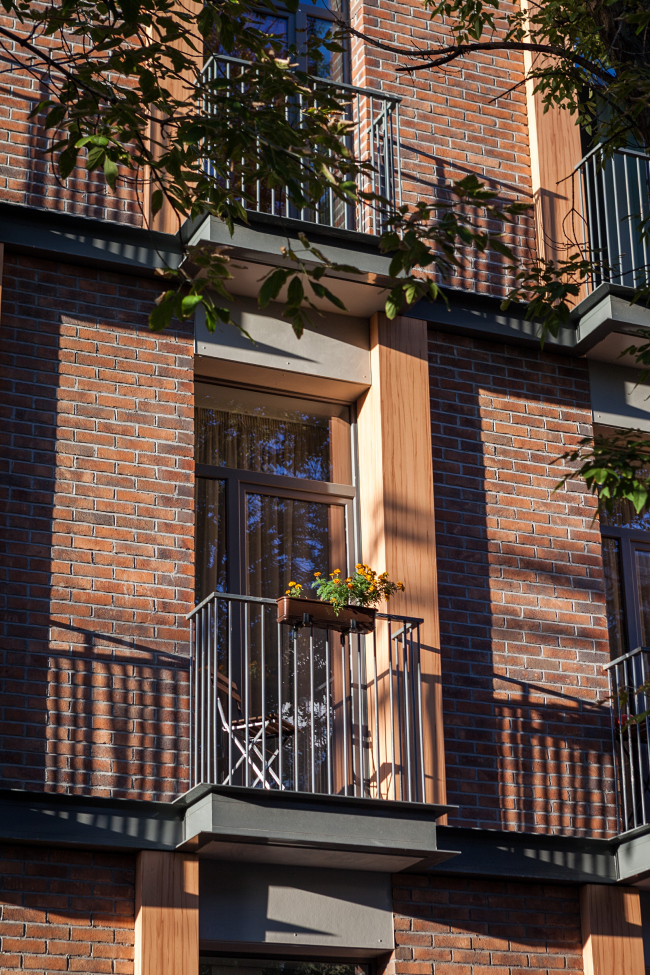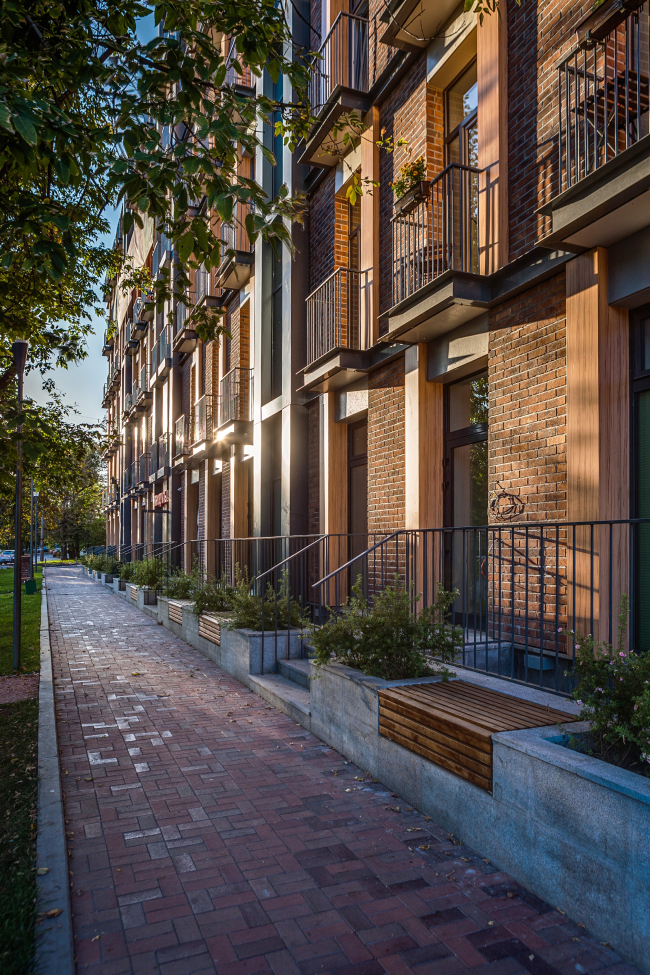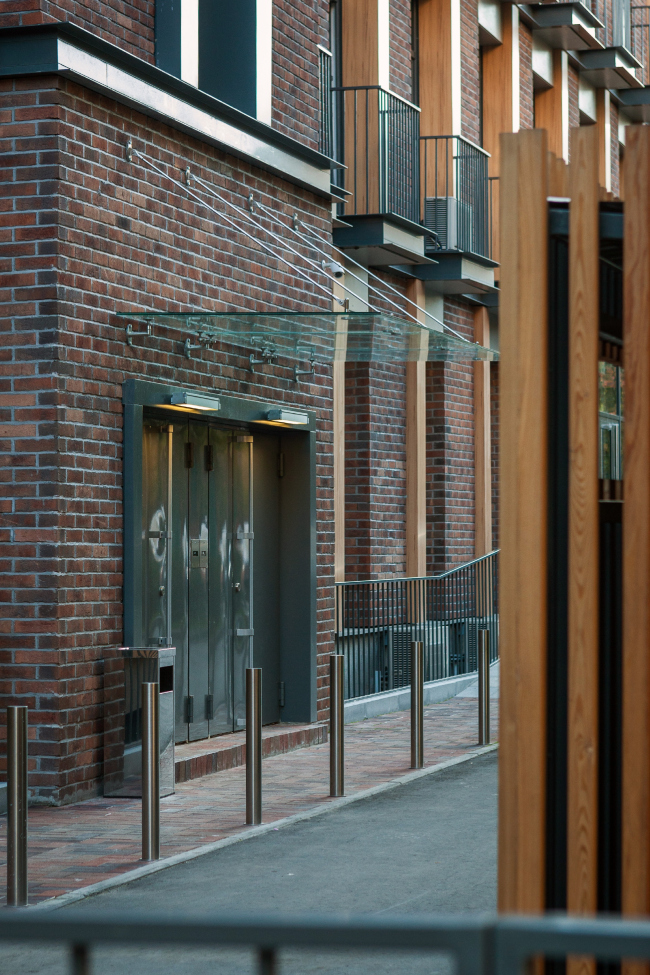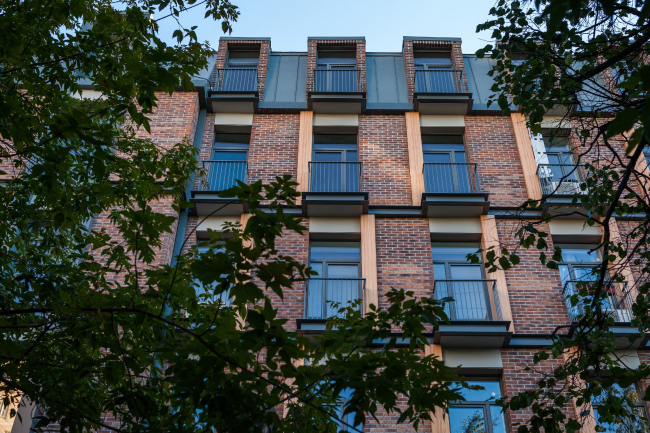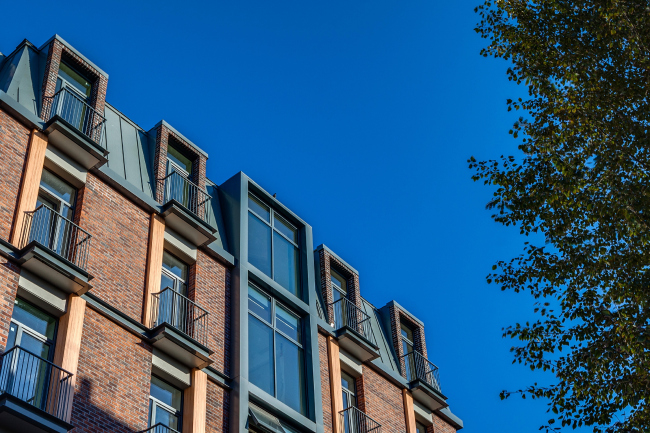|
Renovating a house in the north-west part of Moscow, the ADM Architects built a piece of London into the sleepy Moscow context.
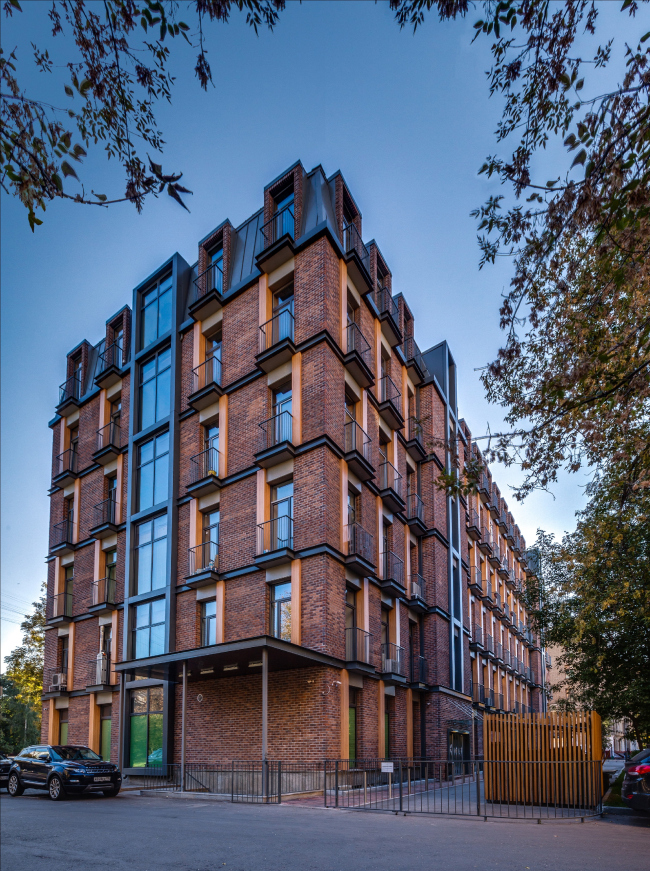
| Renovation of the building on the Berzarina Street. Photo © ADM Architects / Anatoliy Shostak |
|
The house that was renovated by ADM Architects (the project that we have already written about) borders on a large Stalin district southwest of the crossing of Leningradskoye and Volokolamskoye Highways. Despite the gaudy housing of the area, the “Stalin” buildings of the mid-20th century still prevail, supported by Mikhail Filippov’s complex “Marshal” that is executed in a similar manner, only much bigger. They are all closer to the Leningradskoye Highway. The buildings to the west grow simpler: they are “diluted” by “Vukhloh towers”, five-storey houses, and the giants of the “Luzhkov (once Moscow’s mayor – translator’s note) style” period. The 1950’s houses are built along the bow-shaped Berzarina Street that separates the residential area from the old industrial railway. There are the cozy postwar three-storey houses here, as well as the extremely simplified classical four- and five-storey affairs: made of lime brick but with plinths and cornices. One of such houses was reconstructed by ADM architects who completely renovated the facades, thus radically changing the whole image of the building.
Being built into a widely-spaced line of a small-town late-Stalin development, the house shows completely different images now. To understand these images, one must look into it. First of all, it has no said plinth or cornice. The upper part is turned into a mansard with double-deck apartments. Their bedroom lofts are illuminated with built-in flat-roof-windows: unseen from the outside, there is a clearly noticeable row of brick window frames, cut like loopholes into the galvanized slope of the mansard.
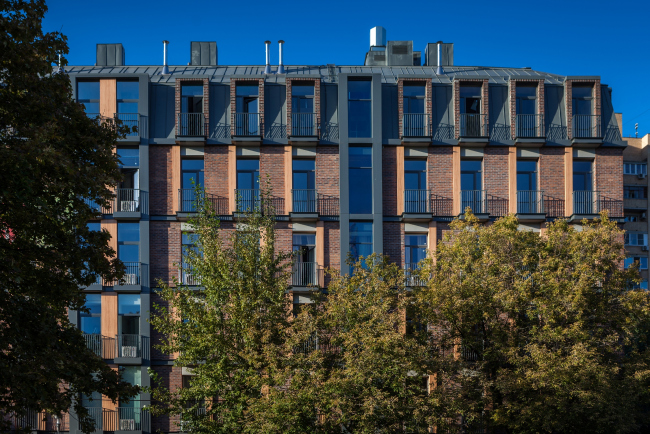
| Renovation of the building on the Berzarina Street. Photo © ADM Architects / Anatoliy Shostak |
|
So the upper part of the house is subjected to the vertical line, not the horizontal, and is sooner open to the sky rather than detached from it as it would be in case of the cornice. This allows to reduce the height of the building, since from a quick glance from underneath one would not understand where the top deck ends and, therefore, does not take it seriously. On the other hand, the same technique becomes either the starting point or the final accent in the new priorities of the façade composition, that is: the house is no more seen as a thick mass slashed with windows. Now it is more of a web, spun from verticals and horizontals, an entwinement of force lines, connected with this or that material.

| Renovation of the building on the Berzarina Street. Photo © ADM Architects / Anatoliy Shostak |
|
For example, the brick surfaces – or, rather, the surfaces finished with artificially aged bricks of different tones – are responsible for the vertical lines, although the split net of the junctures is more horizontal. The grey-colored metal I-beams visually separate the floors and set a wide spacing to the horizontals, whereas the bars of the balconies – half of them for the AC and another half for the balconies themselves – made of the cognate material (i.e. also metal) play the role of the vertical. At the same time, the house is stitched through with giant braces of the vertical glass stairways in metal frames, sometimes with wooden inserts, sometimes combined with window bays. They role of the “vertical communication lines” is played up in all possible ways – and that it very clever. These axes sew the house through like a framework, holding the light rhythmical mobility, set by the interchange of wood-imitating alpolic inserts in the window sashes.
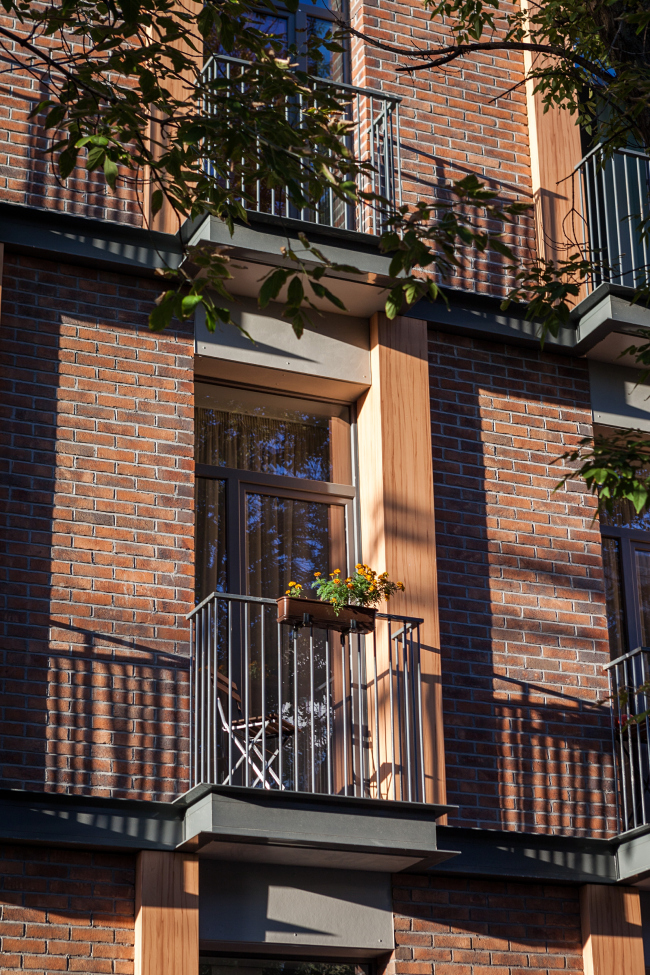
| Renovation of the building on the Berzarina Street. Photo © ADM Architects / Anatoliy Shostak |
|
One will see here a variety of different details tied up into one rhythm, and all the techniques are already known to us from the previous works by ADM - but here they are applied in a different way and serve to achieve different goals – indeed, the authors are perfecting their favorite tricks on different tasks. For instance, we have already seen the alpolic insertions that remind wood on the facades of Smart park complex (which was also ordered by Sminex like the house on Bersarina street), but in that case they reminded open blinds or the ribs of the 70s institute’s buildings. In this case, however, the inserts are wider, their ejection is smaller, and they remind a half of plat-band or fragments of half-framed wooden constructions – as if all the wooden parts were hidden, replaced or painted over and these were all that ultimately remained visible. However, one must admit that it is only a decorating abstract technique, unlike anything else. However, it still allows the architects to animate the rhythm and confront the texture of the dark brick with the bright, sunny glitter of the (artificial) wood – and, as a consequence, soften the texture and humanize the impression of the house as a whole.

| Renovation of the building on the Berzarina Street. Photo © ADM Architects / Anatoliy Shostak |
|
The architects have been also working with the “special” brick for a long time – and in this case it replies for the respectability and the "continuity" of the house. The vertical proportions of the windows are also a loved method of ADM: in almost every reconstruction project the architects stretch the apertures to a noble outline. The same can be said about the multilayer facades. Working with the walls the architects consider width of about 27 inches as “theirs”. This house has the glass surface, the thinnest inside one, the light-grey fiber concrete front over it – the band that visually stiches together all windows in the upper part, then there is the brick, metal and finally the balcony bars – the furthest projecting ephemeral “avant-garde”. The I-beams between the floors (a special mark of ADM architects) have been also transformed in this project bending forward replicating the projections of the balconies. They look more austere in other ADM houses and remind rails. Here, with the inter-floor bar friezes, they suddenly display their decorative nature and their relation to classical architecture. By the way, one can find at least one house with very similar pull-bars (only of stucco) among Stalin buildings here along the street.

| Renovation of the building on the Berzarina Street. Photo © ADM Architects / Anatoliy Shostak |
|
And, finally, another favorite method, or rather even a theme: the authors, as we already know, pay a lot of attention to the surrounding land improvement and do everything necessary for the city and the house dwellers, and maybe even more than needed. This project is not an exception, either: the back yard is enclosed with a transparent grating – only for the locals – decorated with special lights and is supplied with a summerhouse – its wooden bars hide the local people away from passers'-by eyes.
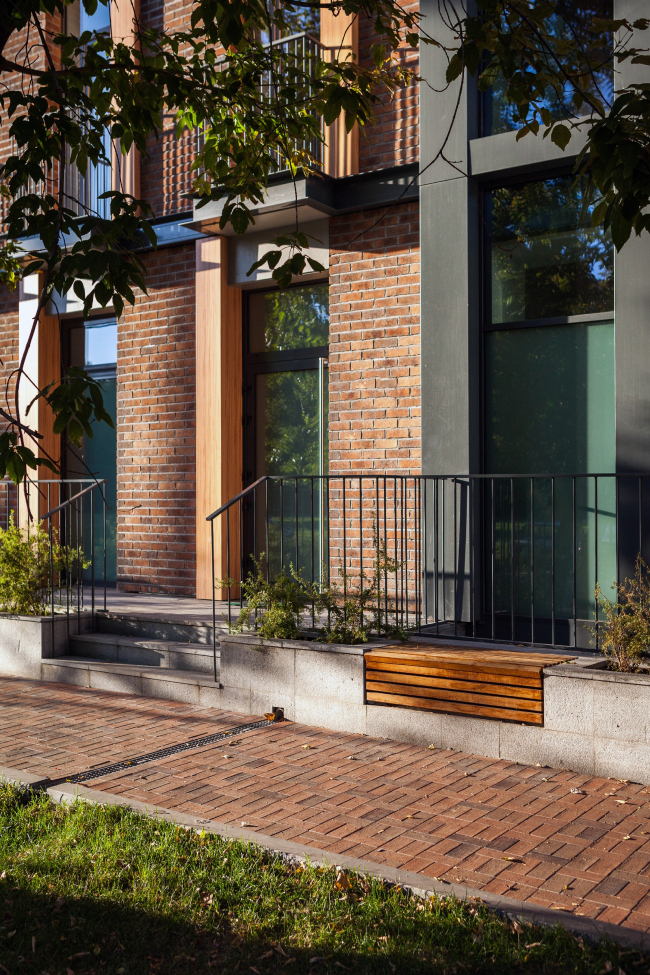
| Renovation of the building on the Berzarina Street. Photo © ADM Architects / Anatoliy Shostak |
|
The architects paid even more attention to the street part: the trees on the sidewalk are supported by grass-plots, brick pavement and wooden benches, fixed into the stone parapet with flower-beds, stairs and metal lattices. This parapet is the most unexpected – at least the most unusual for Moscow – part of the house. The fact is that it conceals a rather deep semi-basement – the windows overlook a fairly deep and wide stone-finished “trench”, thus getting a good deal of sunlight, though less than the main floor windows. It is a place (as well as the ground floor) for shops and office premises.
The wide parapet with the flower-beds, benches and lattices interrupted by staircases leading to the ground floor and ramps prevents people from falling into the trenches. And all together it looks like… absolutely like London, or some other North-European (Dutch) city or an Anglicized American city. The lattices interchanged with staircases and flower-beds, brick, the presentable tall windows with grating at the base (that is sooner a French style, in terms of origin) – form a familiar picture from different movies or – for the lucky ones – from the travel memories. So the half-asleep Moscow semi-suburb that brings back the nostalgic memories of bakeries with glazed halva, walks with a dog, playing football – has been colored up by a piece of London – both structurally and from the sensation of it. No wonder, that there is already a plenty of cars around, the shops are open and pretty women come out of the beauty parlors – the house has begun to live a life of its own.
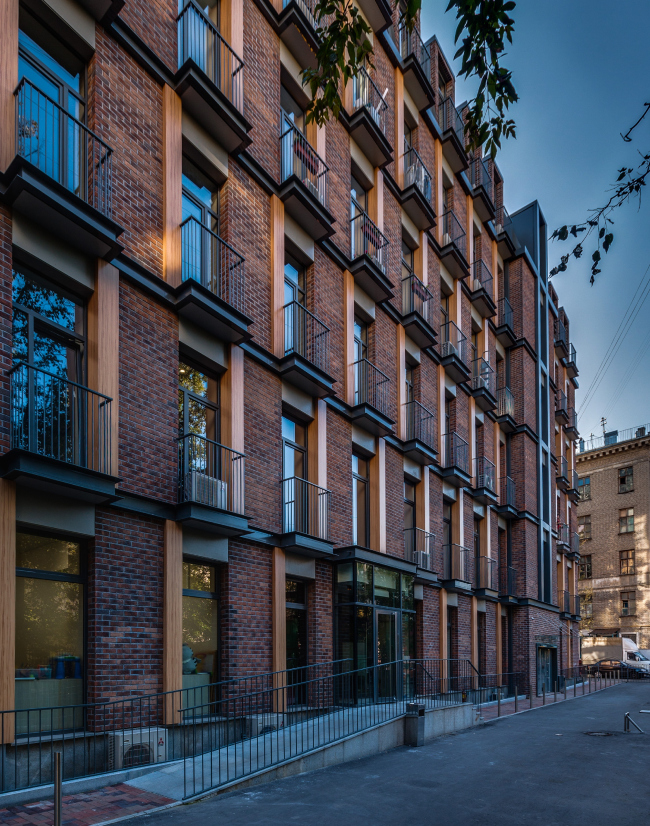
| Renovation of the building on the Berzarina Street. Photo © ADM Architects / Anatoliy Shostak |
|
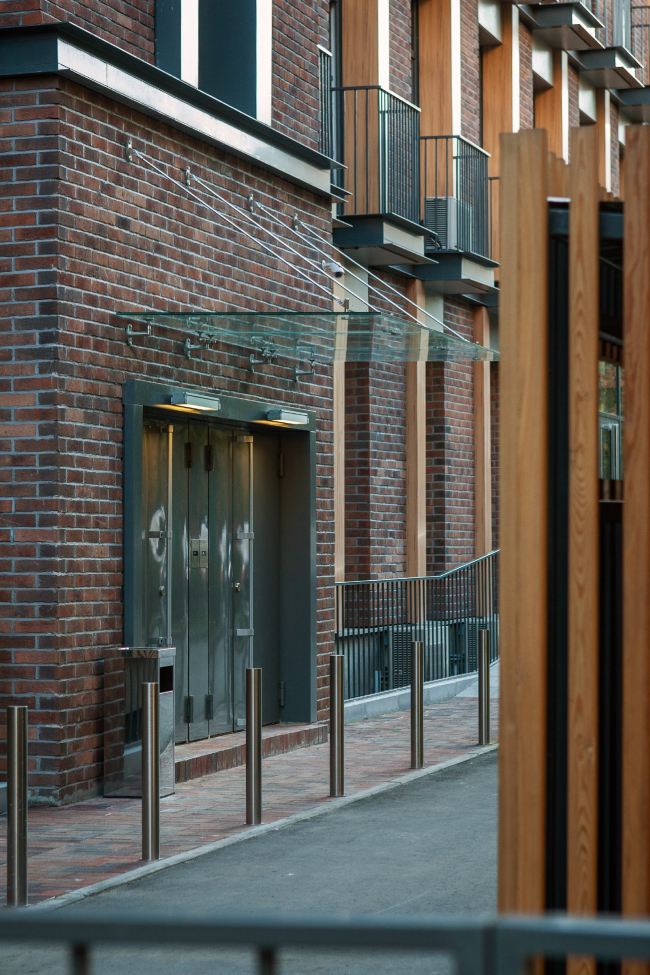
| Renovation of the building on the Berzarina Street. Photo © ADM Architects / Anatoliy Shostak |
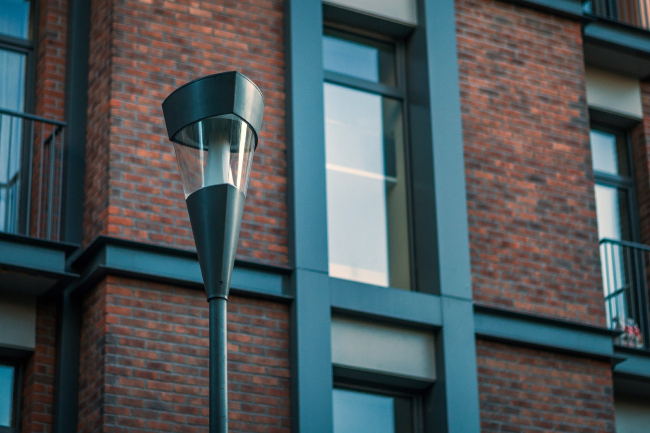
| Renovation of the building on the Berzarina Street. Photo © ADM Architects / Anatoliy Shostak |
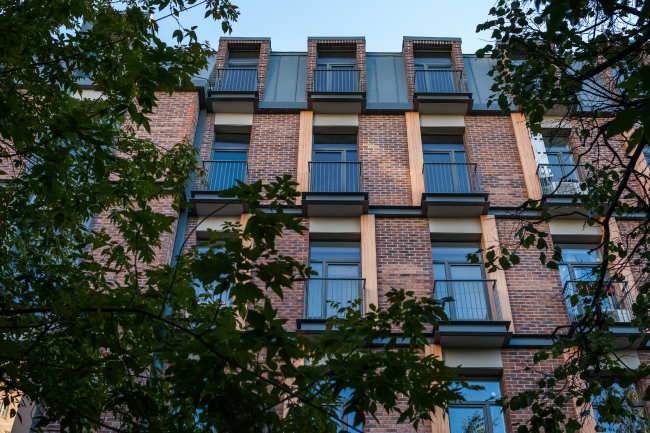
| Renovation of the building on the Berzarina Street. Photo © ADM Architects / Anatoliy Shostak |
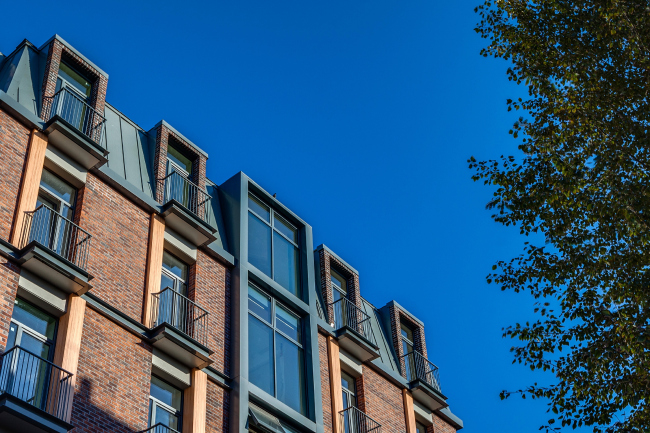
| Renovation of the building on the Berzarina Street. Photo © ADM Architects / Anatoliy Shostak |
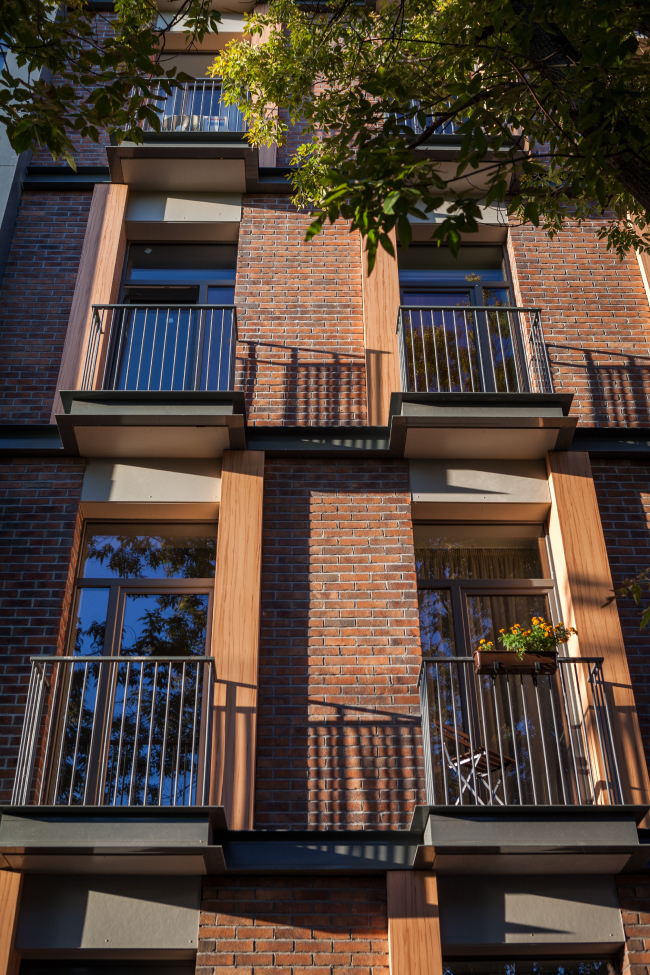
| Renovation of the building on the Berzarina Street. Photo © ADM Architects / Anatoliy Shostak |
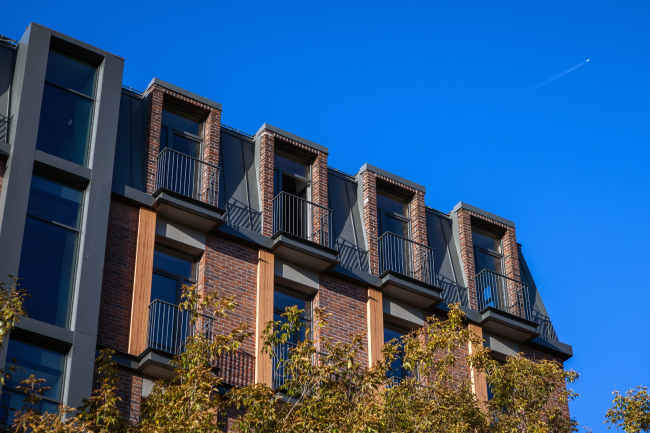
| Renovation of the building on the Berzarina Street. Photo © ADM Architects / Anatoliy Shostak |
None
None
None
None
None
None
None
None
None
None
None
None
None
None
|















